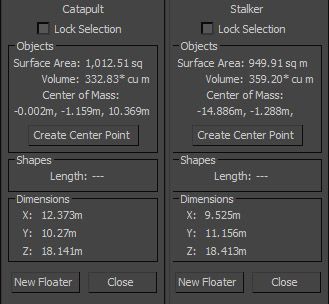While I agree that scaling could be much better and more consistent, I feel like a lot of the complaints look too much at height and front profile instead of considering the actual volume of the models. If a mech has a bulky side profile like the stalker or king crab it increases volume a lot and thus reduces height and front profile, which makes perfect sense. Same with things like thick legs etc, and on the other hand slim designs naturally gets very like the grasshopper. I'm not saying these scales are correct, but it might not always be as off as you think or in the way you think.
For example the grasshopper compared to the Cataphract, everyone is obsessed with the hopper being "too tall", but when I look at them from different angles it seems to me that the volume is pretty similar. The cataphract model might even have have more volume for all I know.
In my opinion the grasshopper isn't "too tall", that's just a unique thing about it, tall and slim, I like that. And even if they were to reduce the size of it I would prefer they made it slimmer instead of shorter. The problem is rather that it's not agile enough, which is the problem with tall mech in general in MWO, if it was more of a ballerina to drive the height would just feel like a cool feature, and it would actually be a good mech then.
I wish they would just base scaling on a fixed algorithm based on model volume, and assuming increasing density the lighter a mech is.
Assuming similar density for different weights would result in light mechs being a lot larger than they are now, and that wouldn't work very well in MWOs metagame so I think the lighter mechs need to stay relatively dense (small). It also makes sense realistically that smaller machines are more dense, because it is the way it usually is in the real world, a motorcycle is much denser than a car which is denser than a bus and so on.
The result would be a more consistent scaling where that largest difference would be high end mediums and low end heavies getting much smaller.
If you take the locust and the atlas as an example, I would guess that the locust model is at least 3x times as dense as the atlas right now. Since it costs 8x the weight to double the size of a real life 3d object, an equally dense atlas, since it weighs 5 times more and has a bulkier design, would only be 1.4x the height of a locust, or something like that... Which would clearly feel like a too small difference to most people, which is why the small mech need to be much more compact, but it should be done in a consistent way.
Edited by Sjorpha, 01 July 2015 - 04:35 AM.
 Domenoth, on 30 June 2015 - 06:00 PM, said:
Domenoth, on 30 June 2015 - 06:00 PM, said:



































